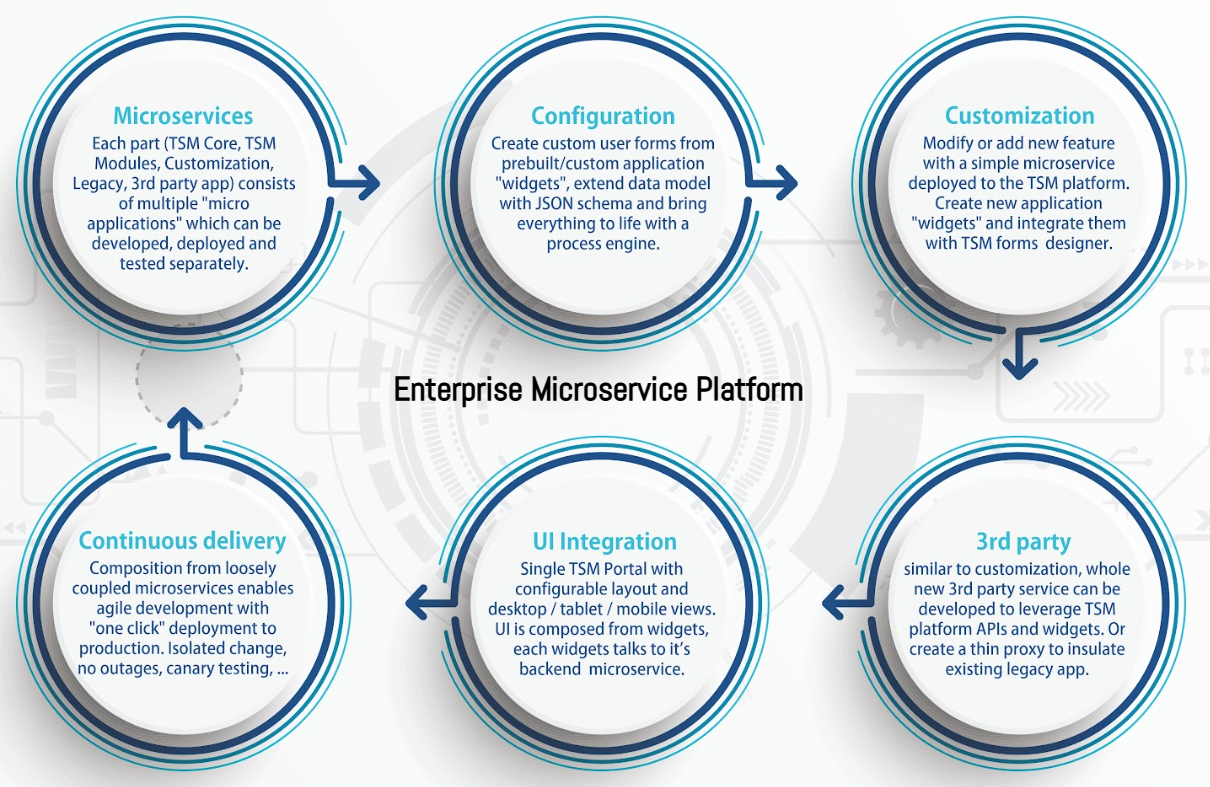Configuration & Customization
In the Telco Service Management (TSM) platform, configuration and customization are fundamental aspects that allow for flexible, scalable adaptations to specific operational needs in the telecom industry. Built on a microservices architecture, TSM's design ensures modularity, enabling independent development, testing, and deployment of components that are crucial to maintaining efficient service management.

Configuration
TSM’s configuration framework allows users to create custom forms and processes by utilizing prebuilt or custom application "widgets." These forms are configured using JSON schema to extend the data model, which is brought to life through a process engine. This modular configuration approach simplifies the extension of functionalities within the system, ensuring that service providers can tailor workflows and interfaces to their unique requirements. The system's flexibility in creating custom workflows enables efficient management of customer interactions, service orders, workforce assignments, and notifications.
Key Features of Configuration:
- Widget-Based UI Composition: TSM’s UI is composed of modular "widgets" that interact with the system’s microservices. This widget-based design allows for flexible layouts and views across different devices (desktop, tablet, mobile).
- Process Engine Integration: Configuration includes the ability to automate processes by designing workflows in the Process Designer. This integration between custom forms and backend microservices ensures smooth, automated service management.
- JSON-Driven Customization: Configuration settings are stored in a standardized format, providing extensibility and easy integration with new data models.
Customization
Customization in TSM involves the development of new features or enhancements that integrate seamlessly into the existing platform. This is typically done by developing new microservices or modifying existing ones, which can then be deployed into the TSM system. Developers can also create and integrate custom widgets, expanding the platform’s functionality without disrupting the overall system.
Key Features of Customization:
- Microservice Flexibility: The platform’s microservice architecture allows developers to create or extend services independently. These new microservices can be written in various technologies but are ideally integrated using the TSM preferred tech stack (Spring Boot, Kotlin, Kafka).
- UI Extension: Developers can add or modify widgets that are inserted dynamically into the TSM user interface. This allows for real-time extension of UI functionalities to meet specific operational demands. I* ntegration with Legacy and 3rd Party Systems: TSM provides the flexibility to integrate third-party applications or legacy systems by leveraging the platform’s public APIs or through thin proxies. This allows service providers to build a cohesive ecosystem of tools and services, all working in harmony with the TSM core modules.
Continuous Delivery
Both configuration and customization benefit from TSM's robust Continuous Delivery capabilities. New features, microservices, and configurations can be deployed without disruption, allowing for agile responses to changing business needs. UI integration ensures that all configured and customized elements work seamlessly across multiple devices, maintaining a consistent user experience.
TSM’s ability to blend both configuration and customization gives telecom service providers the tools they need to fine-tune the platform to their exact needs. Whether it’s creating simple process automations or extending the platform with entirely new features, TSM enables rapid adaptation and continuous improvement.